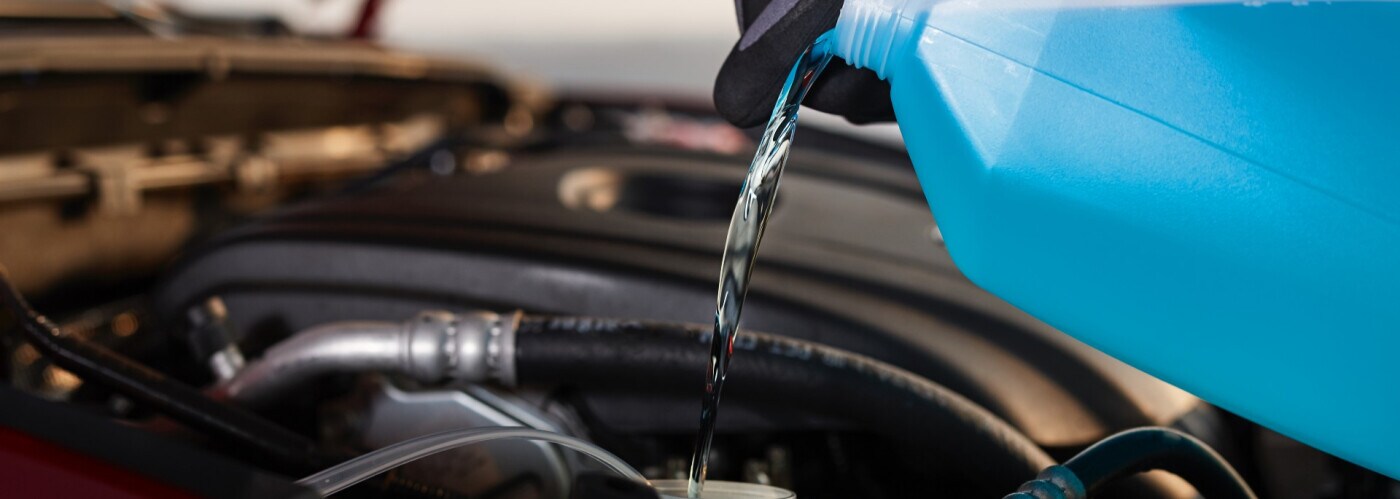
6 Essential Car Fluids and How to Check Them

The engine coolant, power steering fluid, transmission fluid, brake fluid, engine oil, and windshield wiper fluid are your car's six most vital fluids. From regulating engine temperature to keeping your windshield streak-free, these fluids have a wide range of important jobs and play a huge role in the long-term health of your vehicle. This guide from the Lincoln of Lafayette Service Team covers what every driver in the Frankfort area should know when to check car fluids, and why it's important to do so.
How to Check Essential Fluids in Your Car
Knowing when to check car fluids is paramount as a serious car owner. Having Incorrect or improper fluid levels in your vehicle can lead to breakdowns or serious damage, and nobody wants to deal with that. All six of the fluids mentioned below should be checked regularly and replaced as needed, or at intervals recommended by your manufacturer. Let's take a closer look at how to check essential fluids in your car:
Motor Oil
- Purpose of motor oil: Prevents friction between engine parts and regulates the temperature of the engine.
- When to change motor oil: Every 7,500 to 10,000 miles or every six months.
- How to check motor oil: Locate the dipstick underneath the hood. Insert it into the oil reservoir and inspect the level and consistency of the oil.
Brake Fluid
- Purpose of brake fluid: Transfers movement and force from the brake pedal to the vehicle's braking system.
- How often to replace brake fluid: Every 30,000 miles or two years.
- How to check brake fluid: The fluid level should reach the marking on the side of the clear brake fluid reservoir under the car's hood.
Engine Coolant
- Purpose of engine coolant: Optimizes the temperature in your vehicle's cooling system and engine.
- When to replace engine coolant: Every 50,000 miles.
- How to check engine coolant: The fluid level should reach the marking on the side of the engine coolant reservoir underneath your car's hood.
Transmission Fluid
- Purpose of transmission fluid: Ensures swift and smooth gear shifts.
- How often to replace transmission fluid: Every 30,000 to 60,000 miles.
- How to check transmission fluid: Remove and re-insert the transmission fluid dipstick into the reservoir. Pull it out and inspect the level of fluid. The color of the fluid should be a translucent dark red color. If you have a sealed transmission, you'll need to bring your car to a West Lafayette-area service center.
Power Steering Fluid
- Purpose of power steering fluid: Ensures proper function of the power steering hydraulic system that multiplies the force you exert on your steering wheel.
- When to replace power steering fluid: On an as-needed basis, typically when your vehicle starts to become difficult to steer or the power steering system needs frequent service.
- How to check power steering fluid: Locate the reservoir under your car's hood marked with a sterling wheel or the words 'power steering fluid'. It could also be a steering wheel symbol. Ensure that the fluid reaches the marked level.
Windshield Wiper Fluid
- Purpose of windshield wiper fluid: Increases effectiveness of your windshield wipers to provide proper visibility.
- When to replace windshield wiper fluid: When no fluid comes out of the sprayers on your windshield. There may also be an indicator on your dashboard.
- How to check windshield wiper fluid: Look for the reservoir with a windshield washer symbol on the cap under the hood.
Note: before checking the level of any essential car fluids, wait until the engine has had time to cool for at least 30 minutes before opening the hood!
Learn More About Essential Car Fluids with Lincoln of Lafayette
If you need further assistance on how to check essential fluids in your car or when to check car fluids, schedule an appointment online today for our service center near West Lafayette. Before you drive over, check out our service specials to help you save money on needed car services such as oil changes, new tires, brake service, and more.